Robinia wood is a great hardwood producing excellent, long-lasting playground and playspace equipment.
With our expert team in Oamaru, we can manufacture high-quality swings, seesaws, flying foxes and bespoke equipment.
Robinia wood is a great hardwood producing excellent, long-lasting playground and playspace equipment.
With our expert team in Oamaru, we can manufacture high-quality swings, seesaws, flying foxes and bespoke equipment.
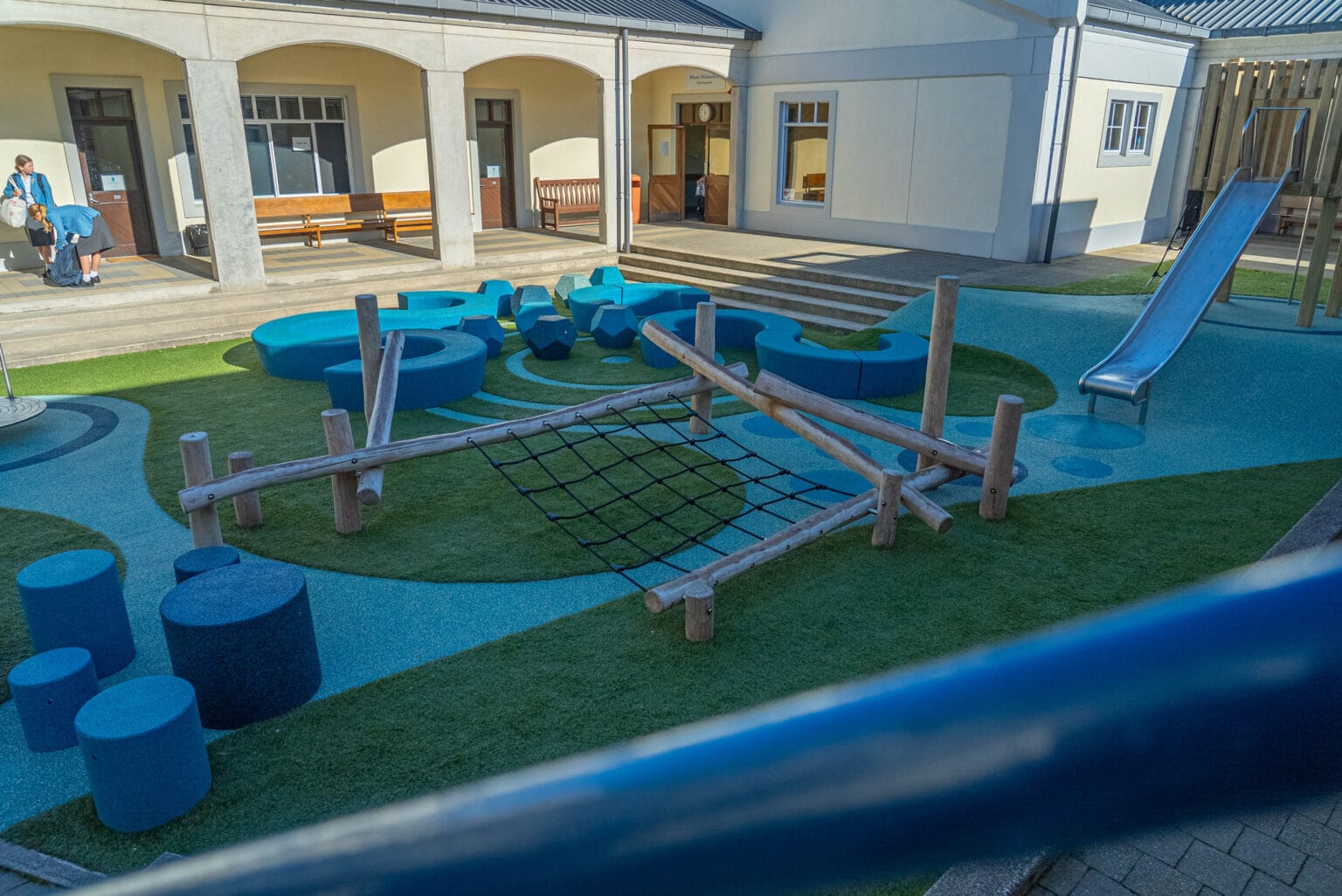

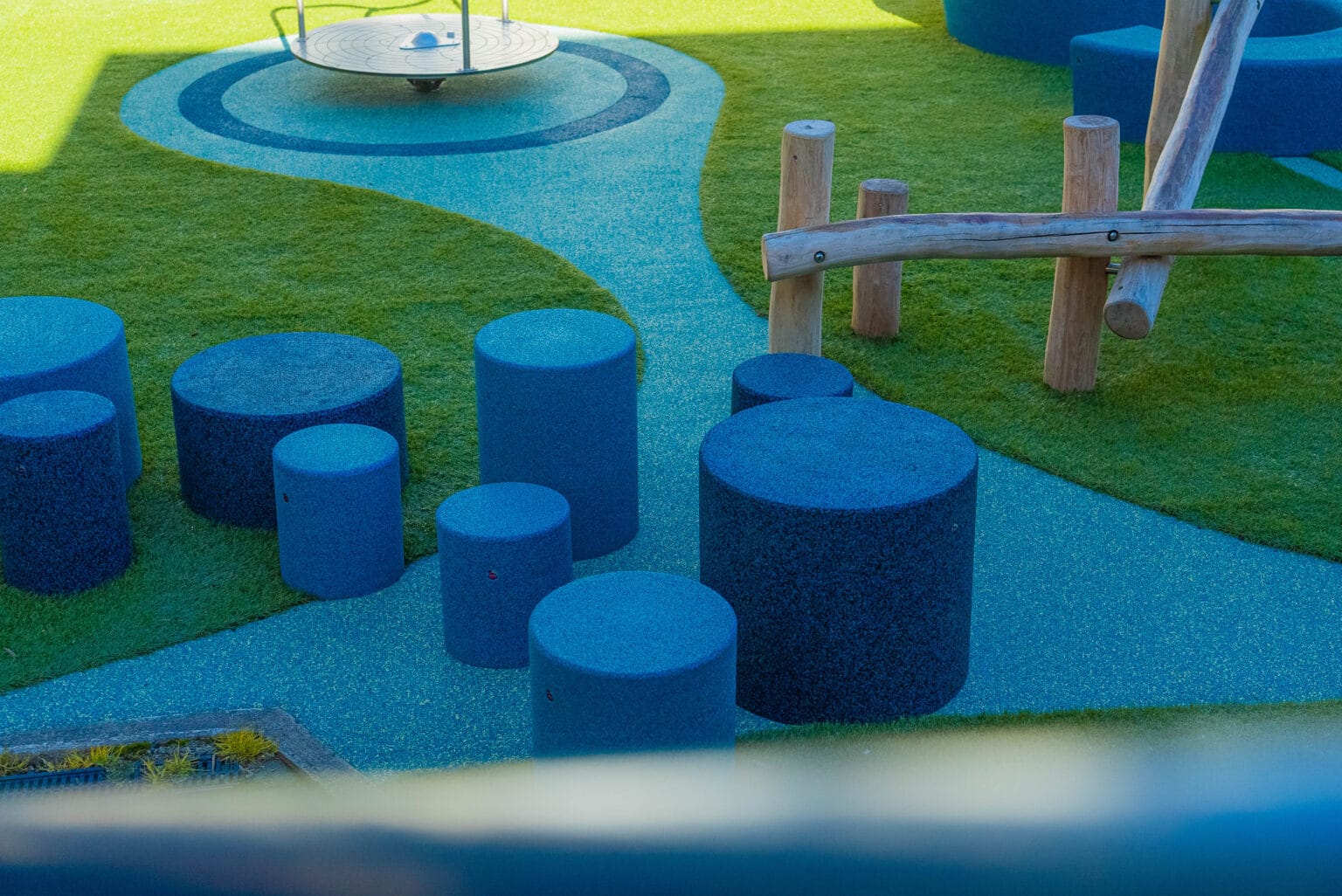

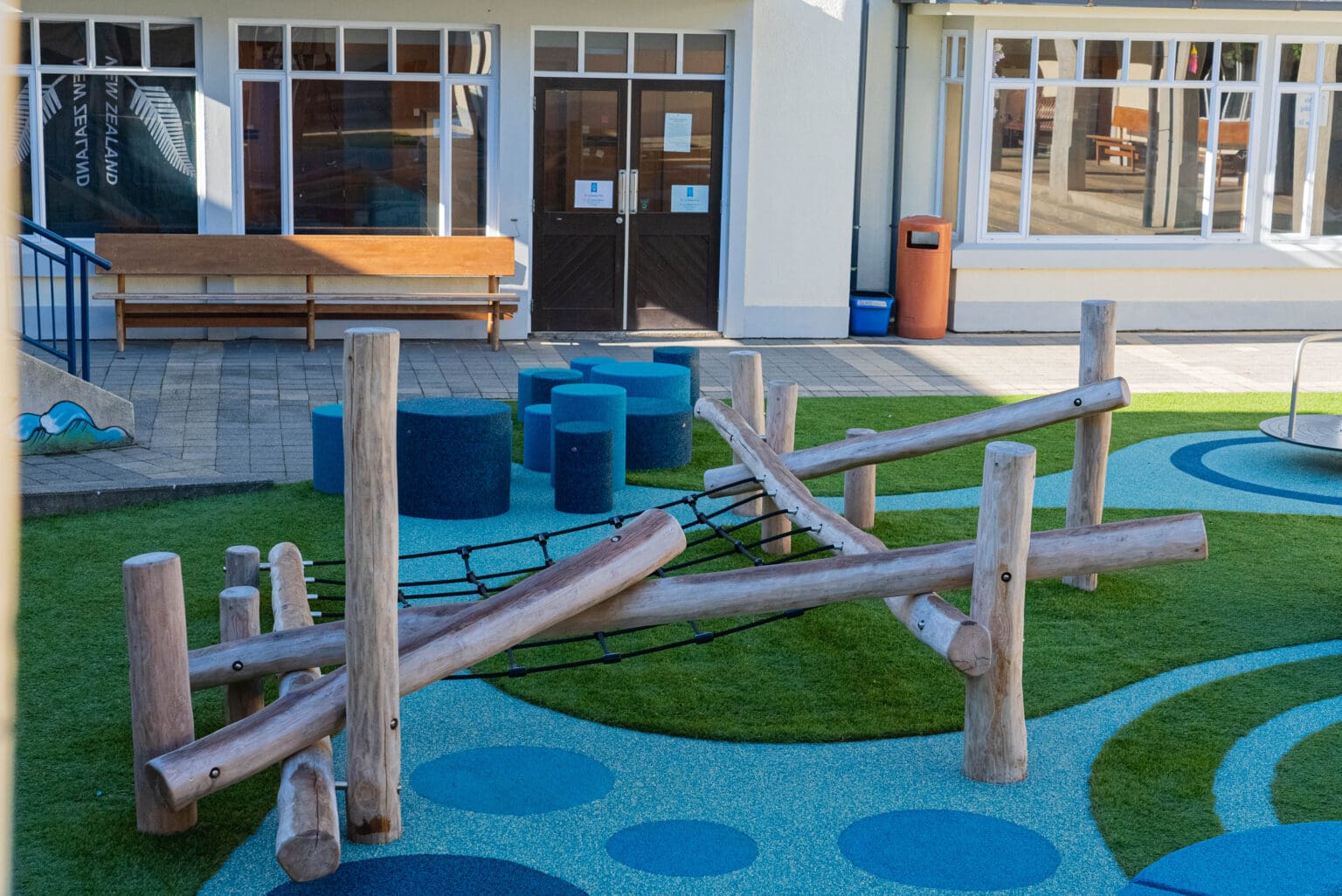

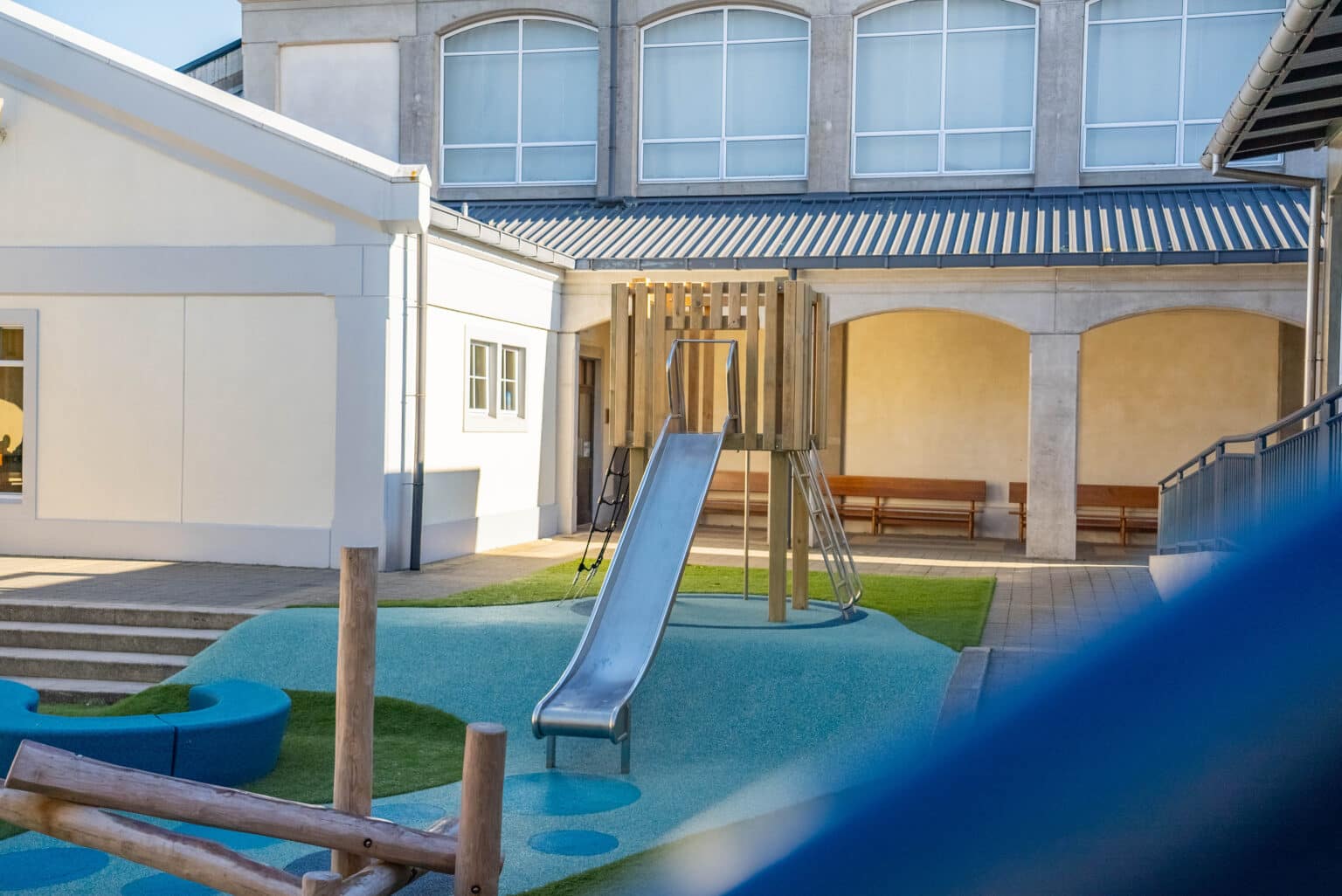

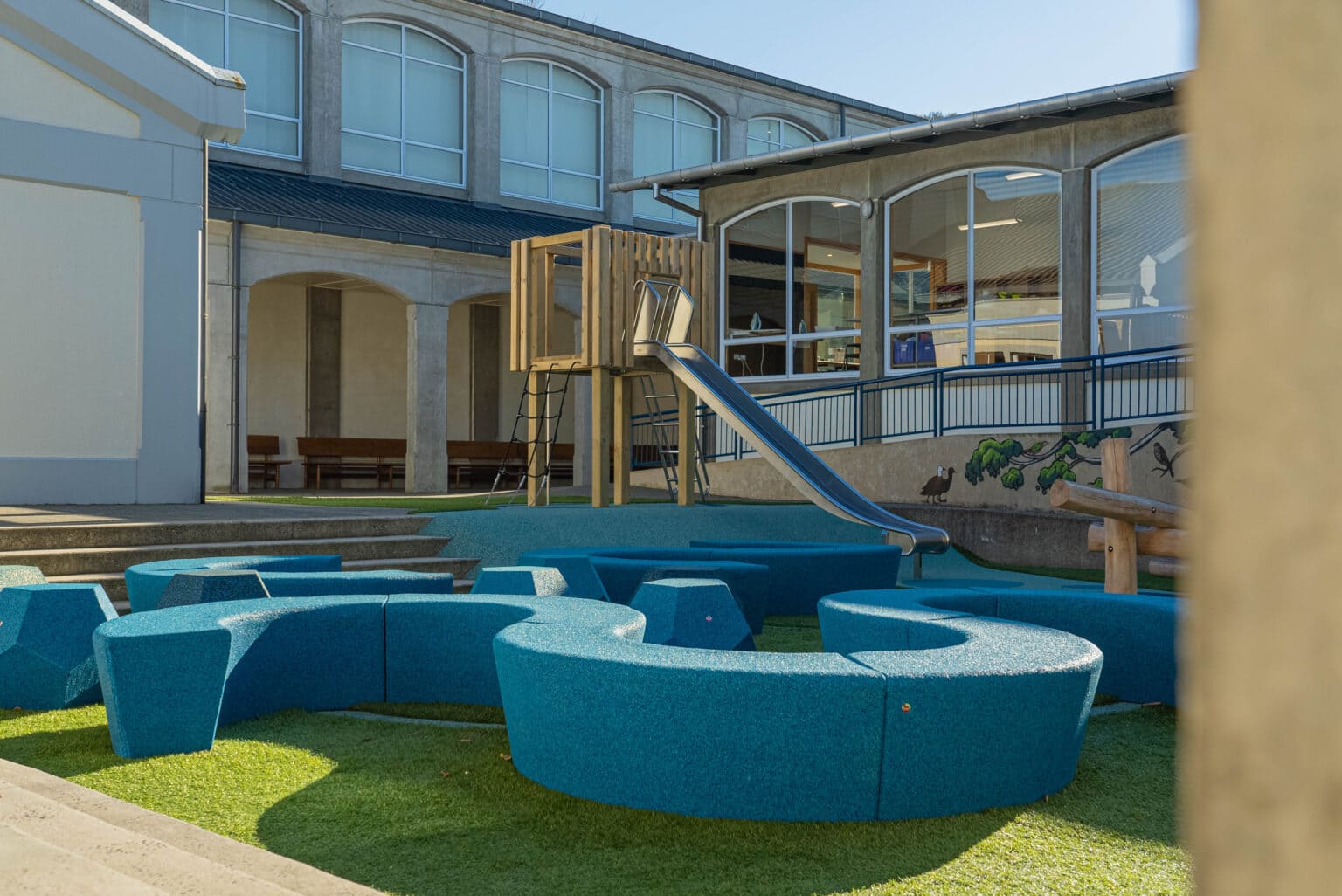



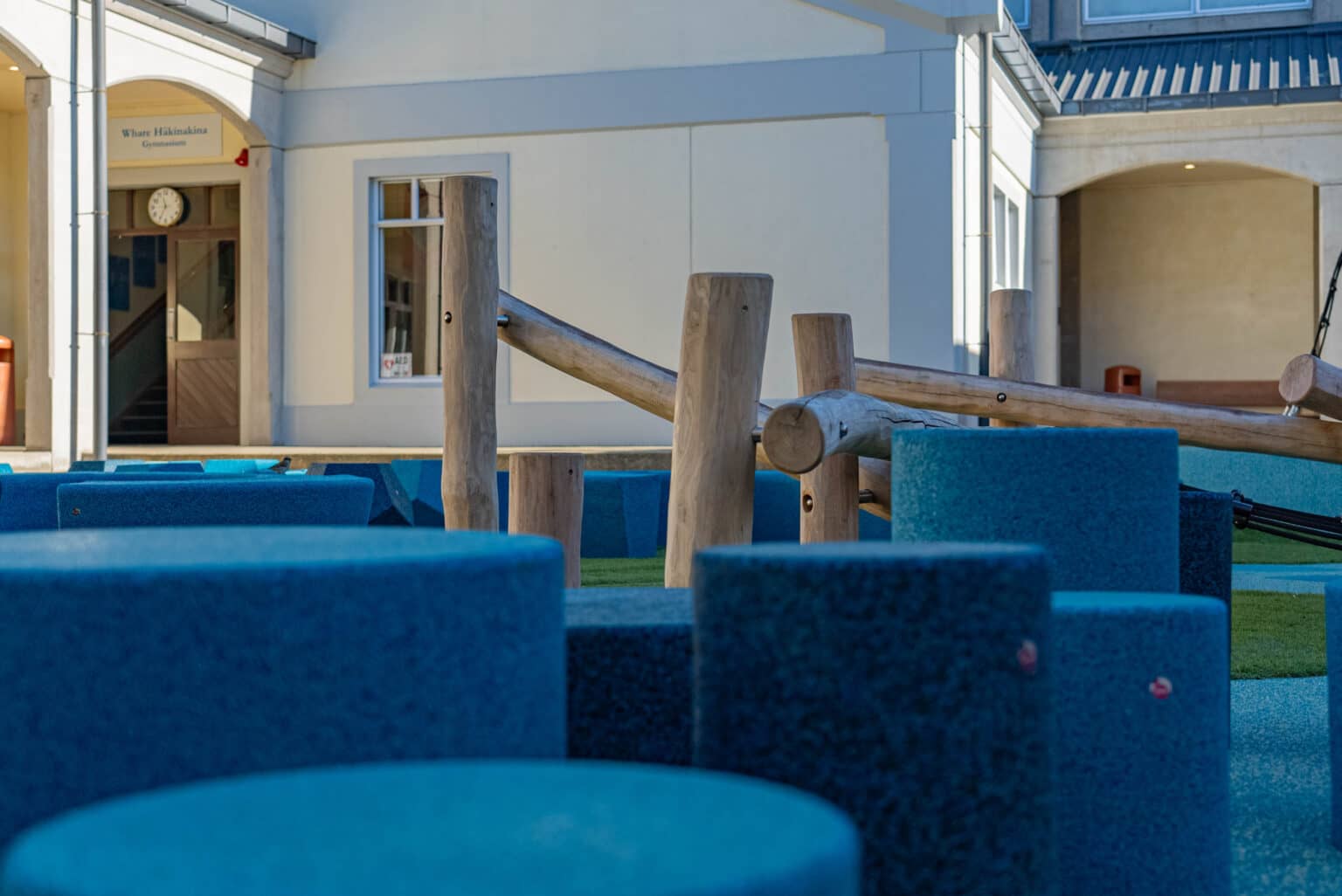

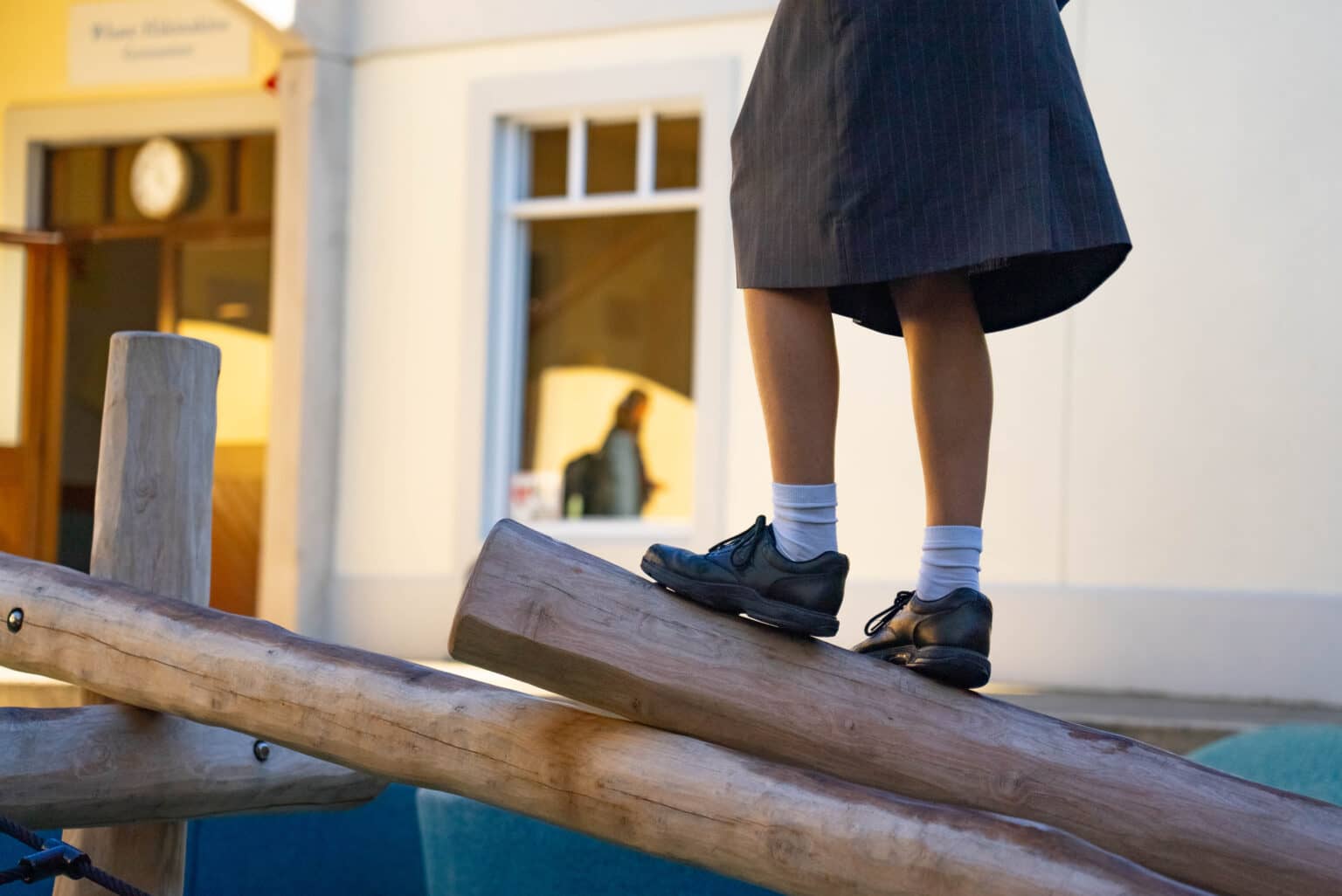

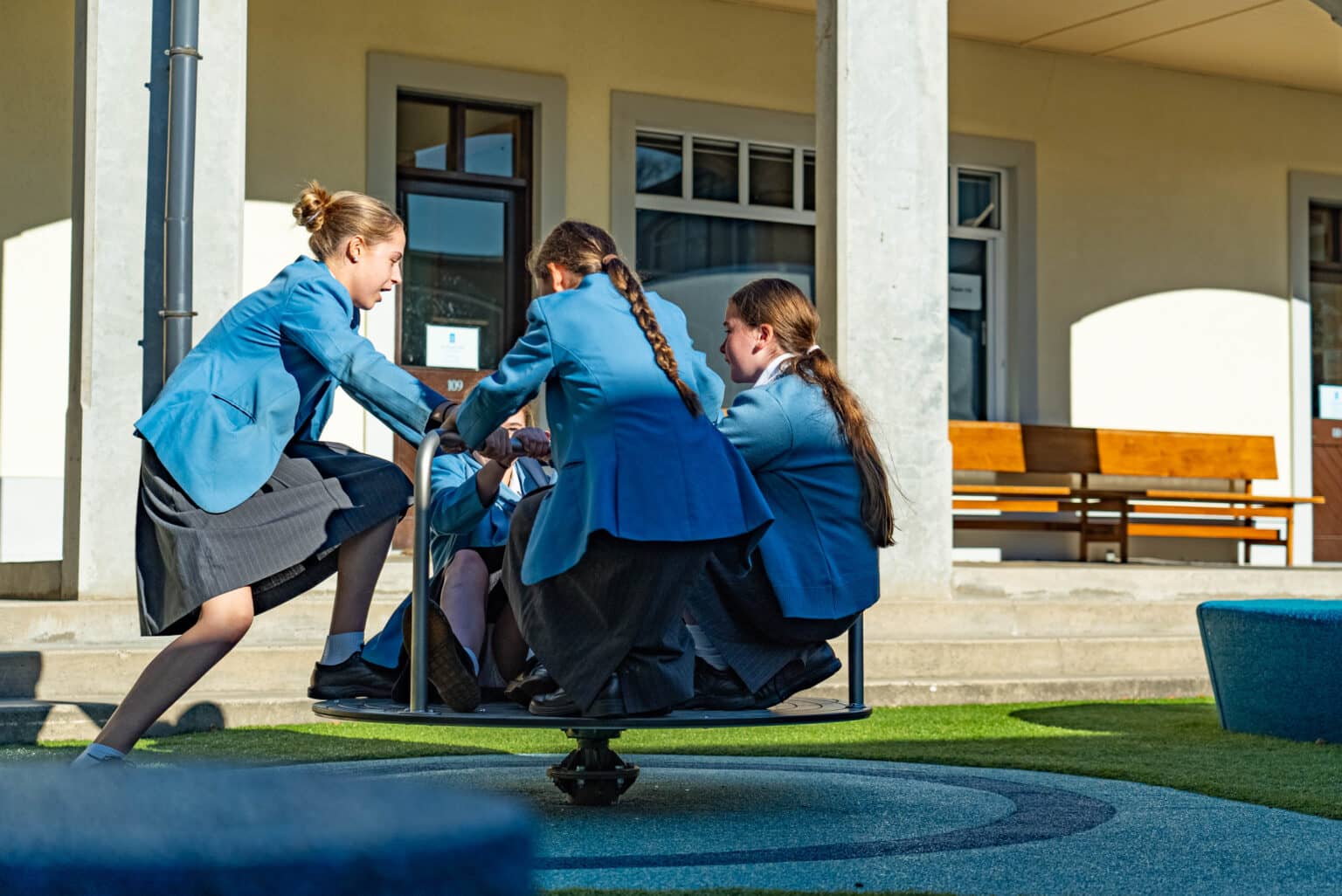

The Project
St Hilda’s Collegiate in Dunedin had a dream: to transform a simple green patch in the middle of their school into a vibrant, interactive playground. They wanted a space that would cater to their students from Year 7 to Year 13, where they could socialize, play, and create lasting memories. For this project, they chose Creo for our ability to design unique and engaging play spaces

Before
Before the playground came to life, the area was just a grassy field, often unusable due to Dunedin’s winter weather. “It was just grass. But living in Dunedin quite a few months of the year, it really was just unusable,” shared Helen Almey, the deputy principal. The students needed a space where they could gather, interact, and have fun regardless of the weather.
What They Wanted to Achieve
The school envisioned a playground that was more than just a place to play. They wanted it to be a social hub where students of all ages could come together.
Helen explained, “We needed something to cater for all the different ages that we have,
something that they could interact with, something that they could socialise on.” The playground had to be compact yet versatile, making the most of the limited space available.
With Creo’s expertise, St Hilda’s Collegiate achieved a fantastic transformation. The new playground became a beloved feature of the school, offering a space where students could unwind, interact, and enjoy themselves.
The response from the students when they saw this playground has been so, so positive. This place is now one that's filled with a lot of laughter, a lot of squealing, and a lot of enjoyment."
Helen Almey
Deputy Principal
The roundabout quickly became a favorite. “The element that has been the most successful and we love the most has been the roundabout. The Year 7 and 8 adore it, but also the Year 13 as well,” Helen shared with a smile.
Highlights and Process with Creo
Working with Creo was a smooth and enjoyable experience for St Hilda’s. Creo’s team visited the site, understood the school’s vision, and tailored their designs to fit perfectly. “They listened to us, they came on site, they talked to us, and they gave us a quote,” Helen recalled.
Despite some logistical challenges, like navigating around a low concrete balcony, Creo’s team remained unfazed and accommodating.
They ensured the project fit within the school holidays to avoid disruption. “Nothing fazed them at all. They were just so really accommodating,” Helen praised.
"We really enjoyed working with Creo.
We would absolutely recommend other schools if they're thinking about putting a playground in, go and have a conversation with Creo"Helen Almey
Deputy Principal

Conclusion
The playground’s success is evident in the students’ reactions. The area now echoes with laughter and joy. “The response from the students when they saw this playground has been so, so positive. This place is now one that’s filled with a lot of laughter, a lot of squealing, and a lot of enjoyment,” Helen remarked. The playground at St Hilda’s Collegiate is a shining example of how a thoughtfully designed space can bring a community together. Our team’s ability to customise their designs to meet the school’s unique needs resulted in a space that is both functional and beloved by students. Helen’s words sum it up perfectly: “We really enjoyed working with Creo. We would absolutely recommend other schools if they’re thinking about putting a playground in, go and have a conversation with Creo.”
Our newest portfolio showcases how schools transformed their underutilised spaces into vibrant and colourful playspaces through a collaborative process with Creo.
Imagine planning to build a playground. Traditionally, you’d start with an architect or landscape architect to nail down your concept.
However, this process is far from straightforward. It involves juggling multiple contractors, sourcing equipment from various vendors, and ensuring the surfacing meets stringent safety standards for fall zones. The complexity of this method, with its multiple stakeholders, escalating costs, and high risk of miscommunication, underscores the need for a more efficient approach.
Unfortunately, this complexity can lead to complications. If something goes wrong, the process can quickly become a maze of accountability, with people pointing fingers and solutions becoming elusive.
This not only threatens the smooth progress of your project but can also significantly extend its timeline.

Here’s how it typically goes down:
Challenges: This fragmented approach often leads to delays, increased costs, and a product that may not fully align with your original vision.
Coordinating multiple companies can lead to disjointed execution and accountability issues, complicating even the most straightforward projects.
Enter the design and build approach, a streamlined alternative where a single entity, like Creo, manages the entire process from concept to completion.
This method reduces friction and frees up time for more critical planning and decision-making, ensuring the project unfolds smoothly without constant back-and-forth.
How It Works with Creo:
Our design experience starts with an internationally experienced team that deeply understands the magic of play. Creo’s playground design engineer has many years of experience in equipment design and packing play value in play equipment, all of which will help create the design you want.

Choosing between the traditional multi-company approach and the design and build method depends on what you value most: flexibility and control over each detail, convenience, and coherence in the final product.
With a company like Creo, the latter is a promise and a delivered reality. They ensure that your playspace is built to your specifications and enriches the community it serves.
So, are you ready to see those smiles and hear the laughter? With Creo, it’s not just about building playgrounds; it’s about creating joyful communities.
You don’t just get a guide. We collaborate with you to bring your project to life.
With our design, surfacing and equipment expertise, we’ll help you have the playground you want and need.
If you’d like to know more and discuss your options, fill out this form.
Or call us on:
0800 000 334
Creo PlayShapes are the ultimate rubber creations that you can add to your playspace project. Safe, durable and custom-made.
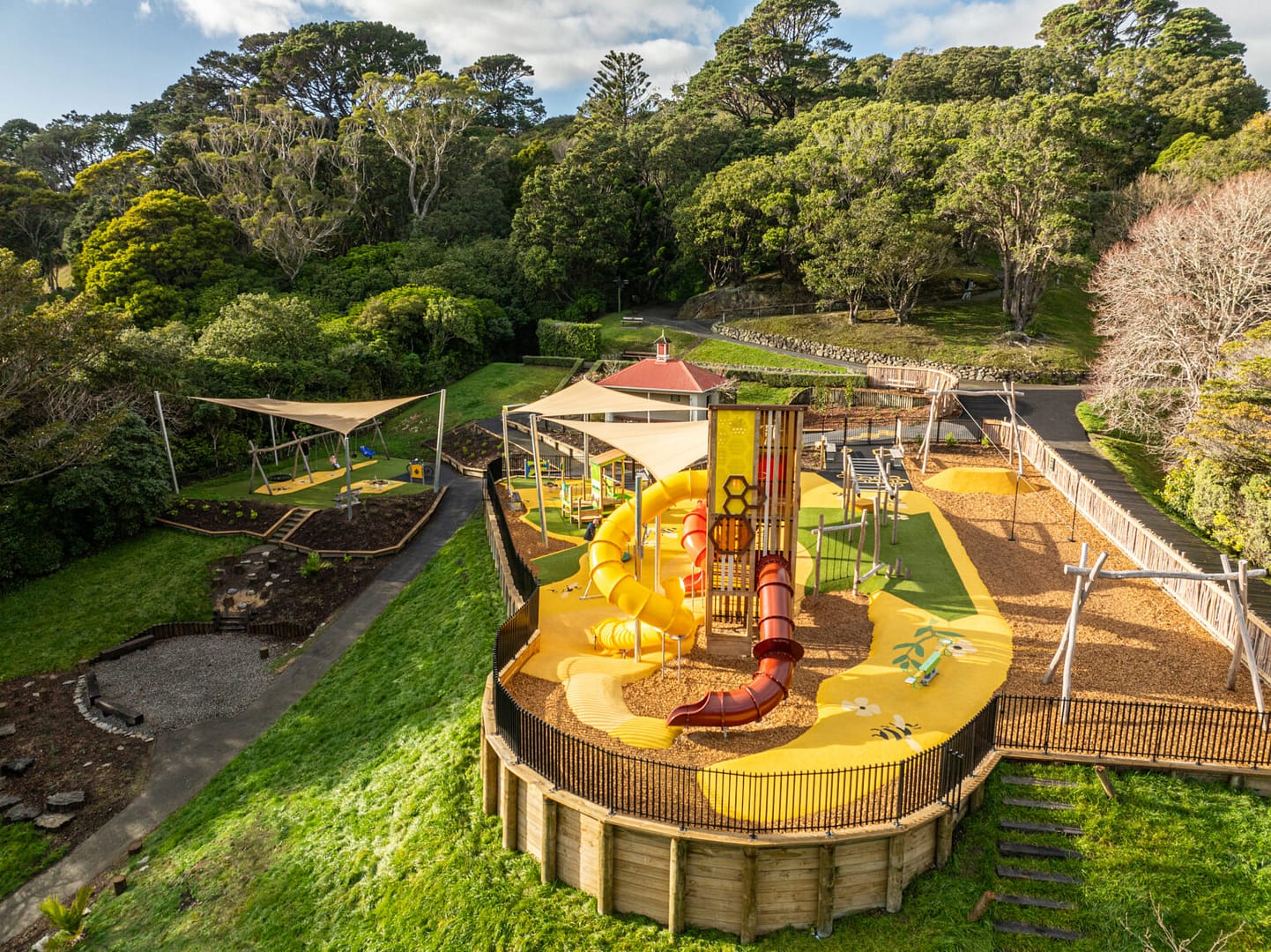

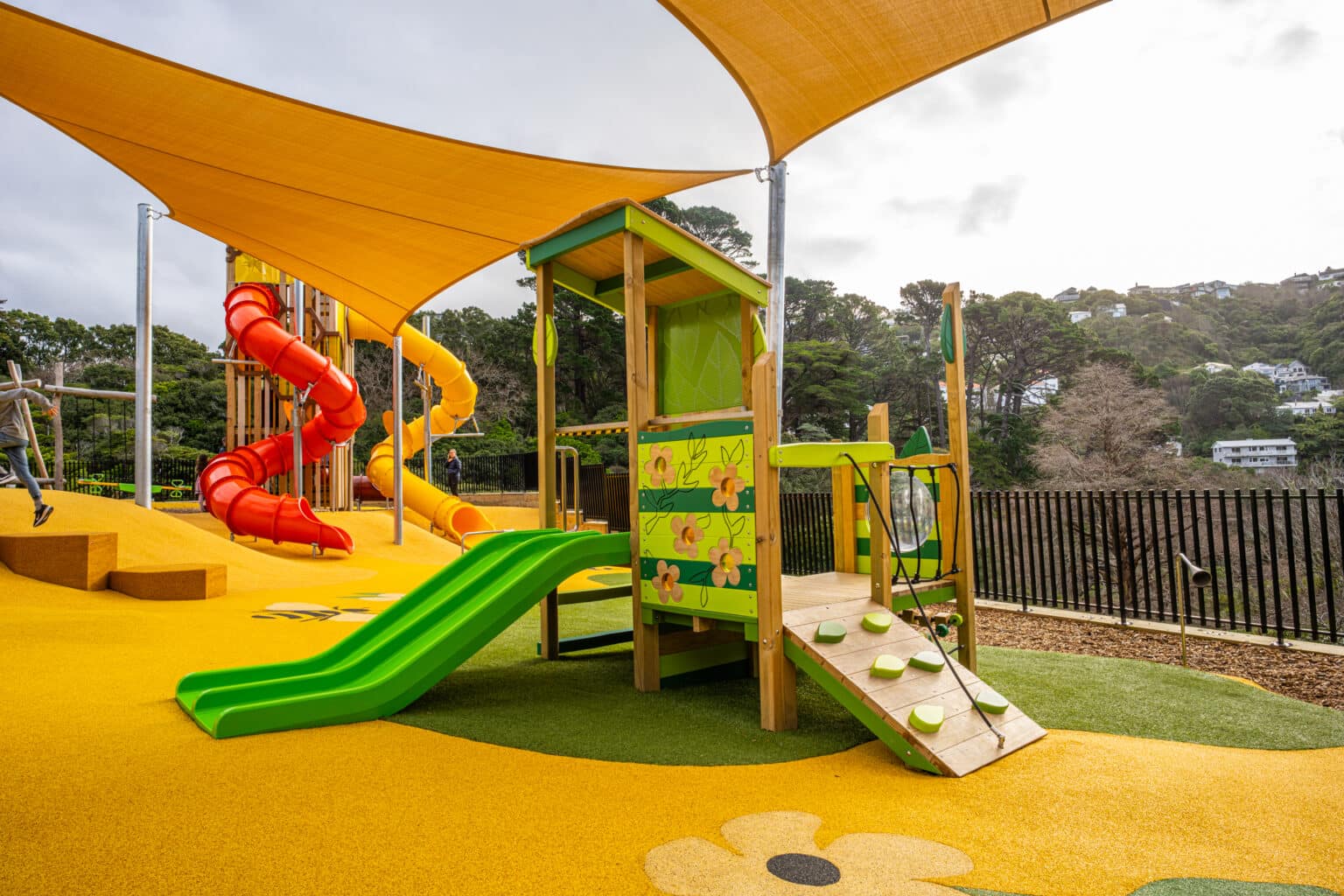

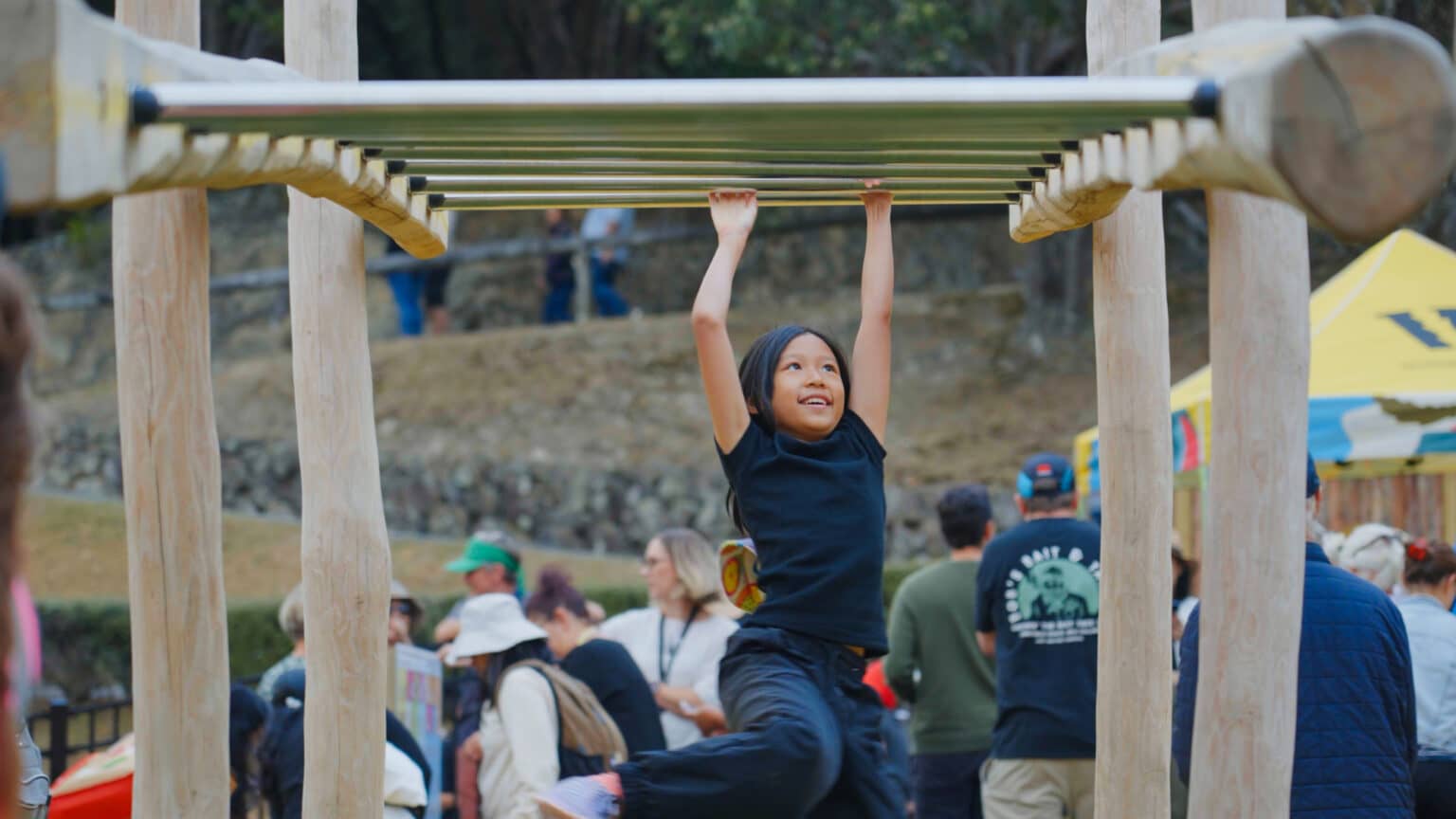

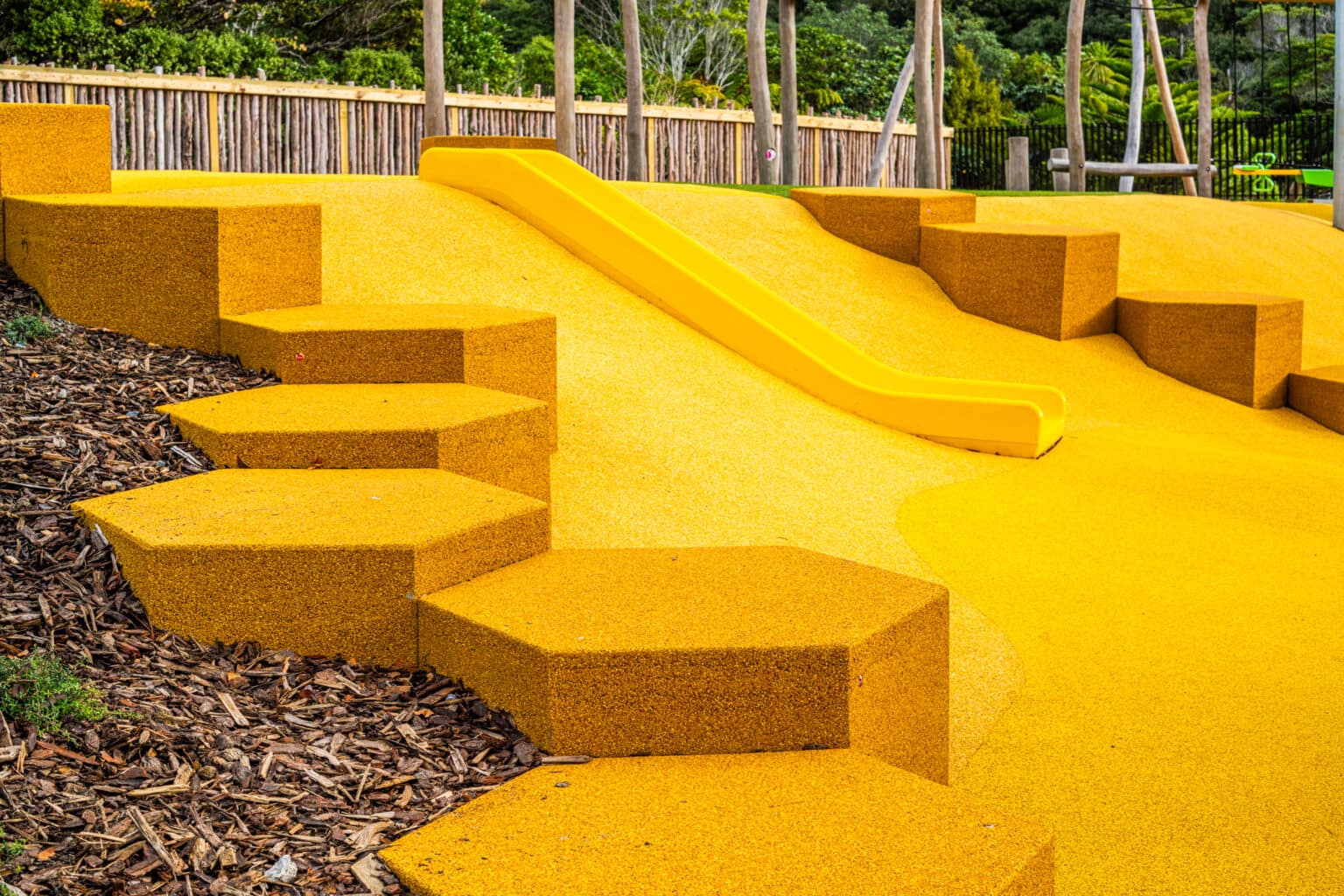

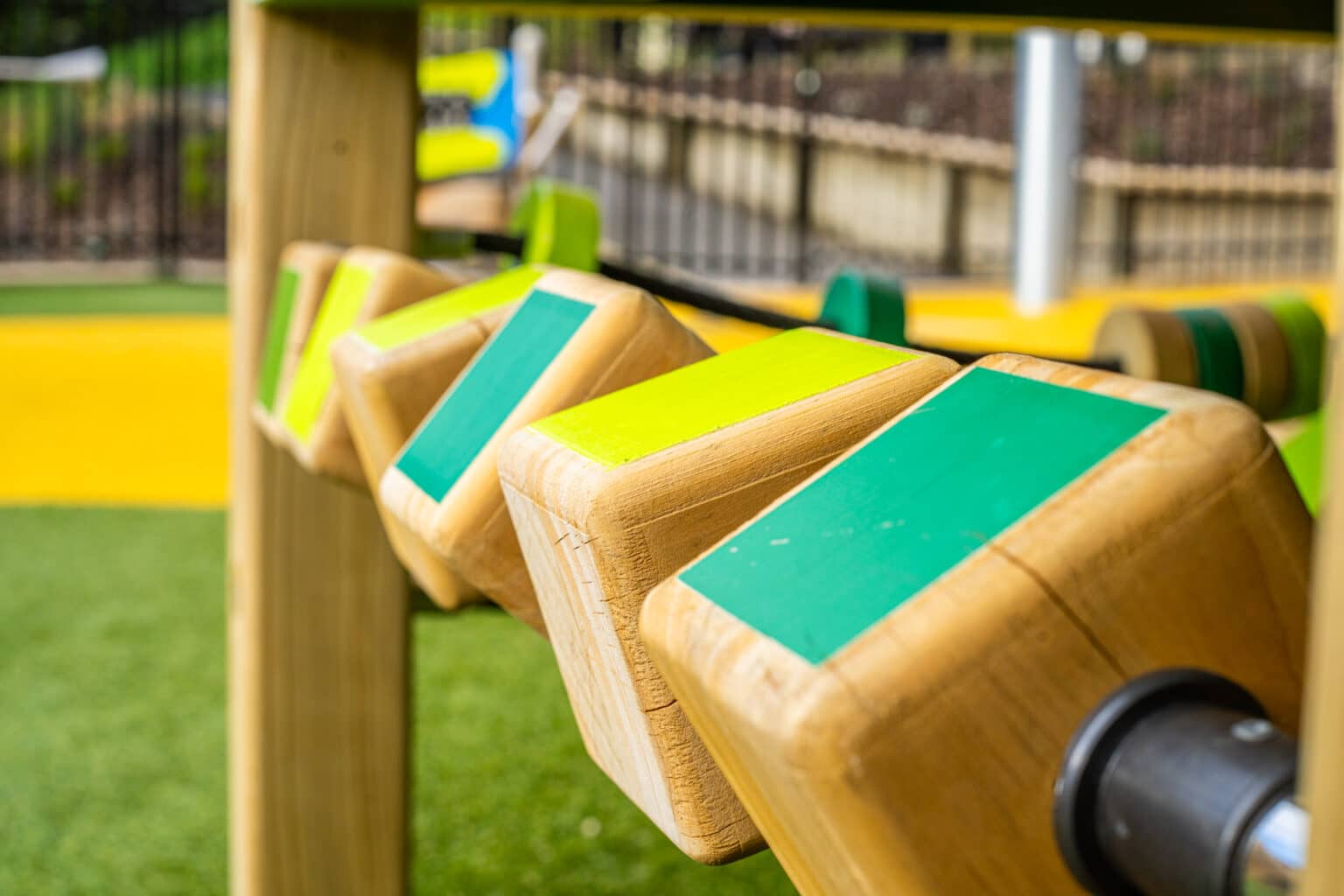

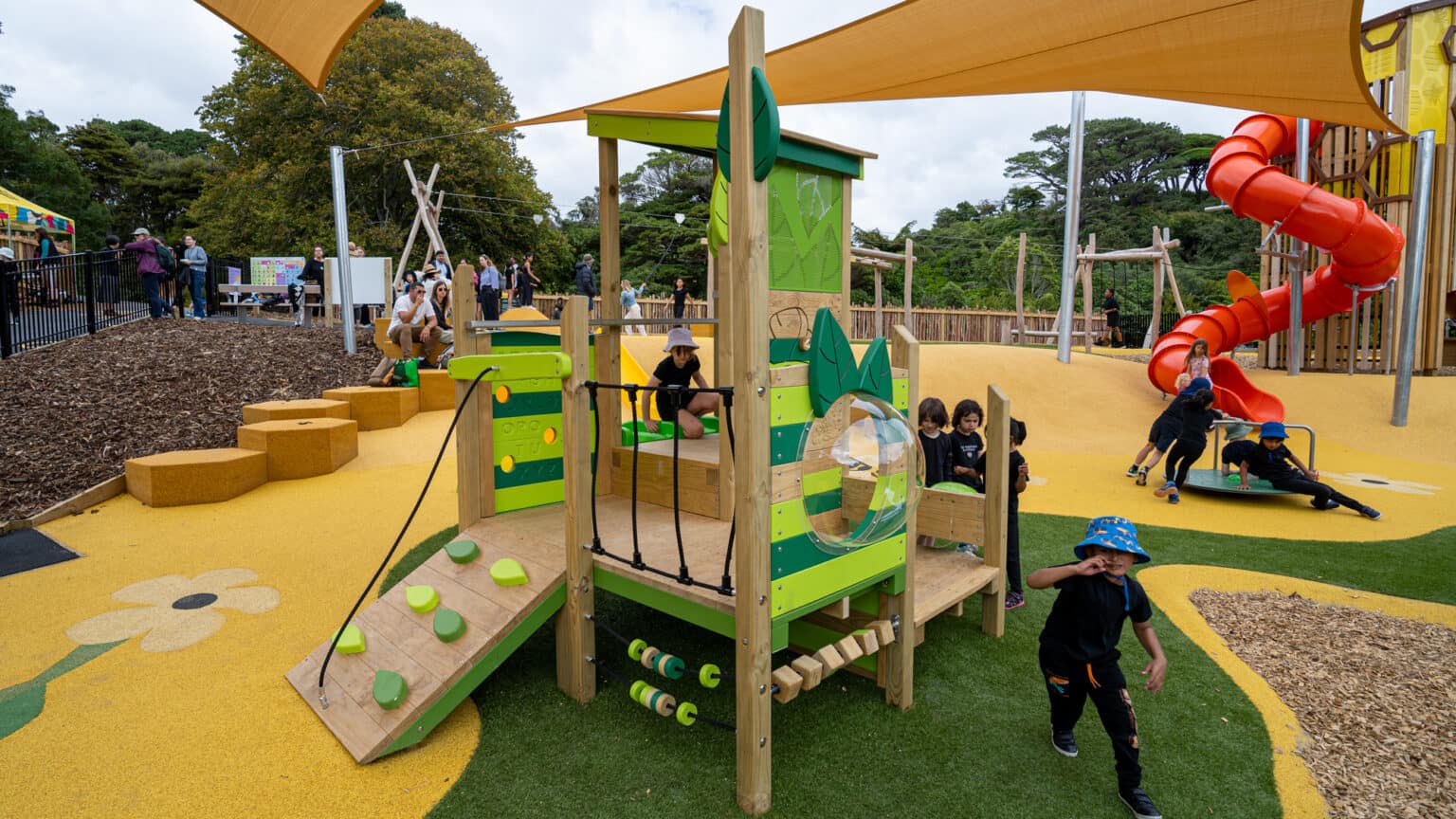

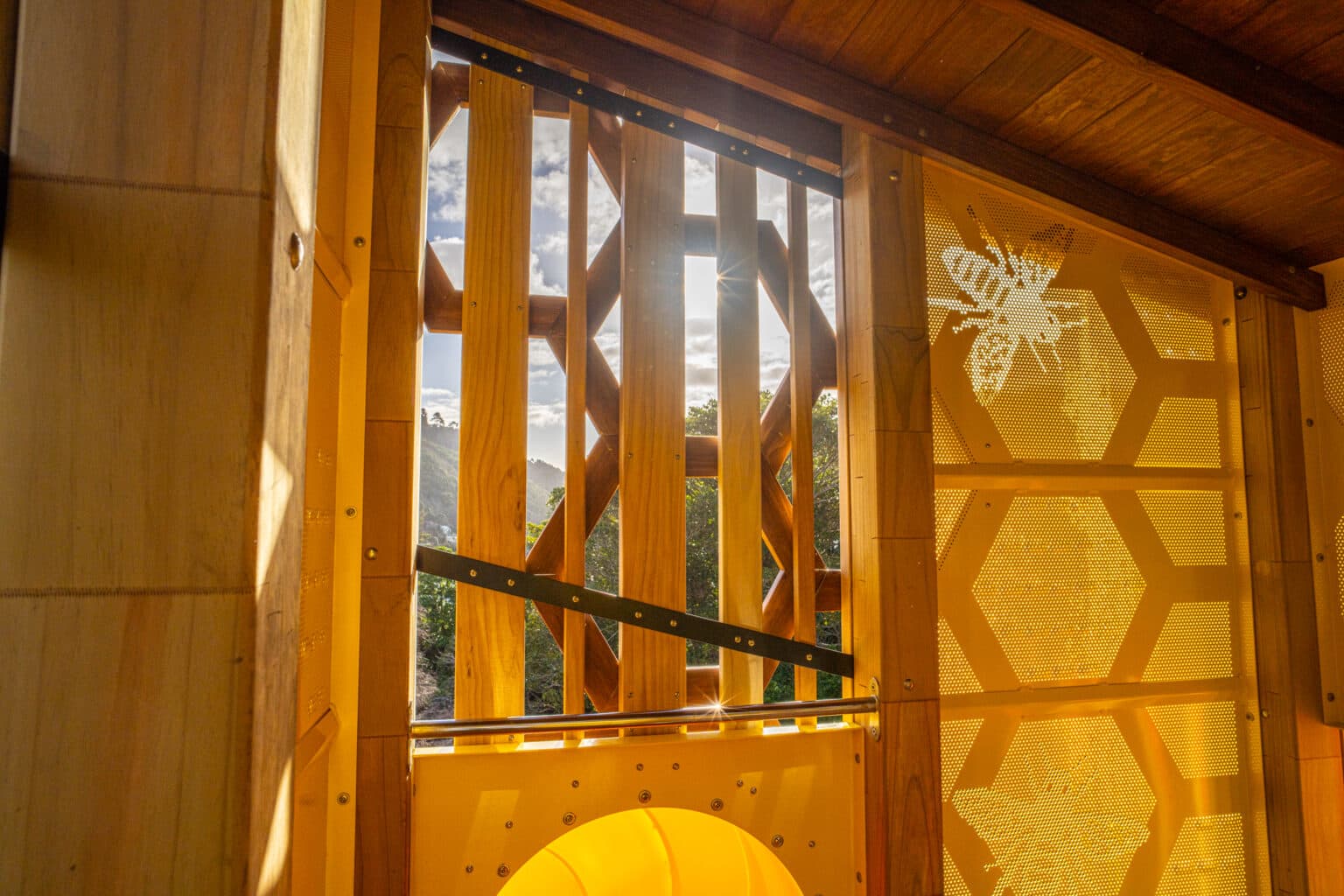

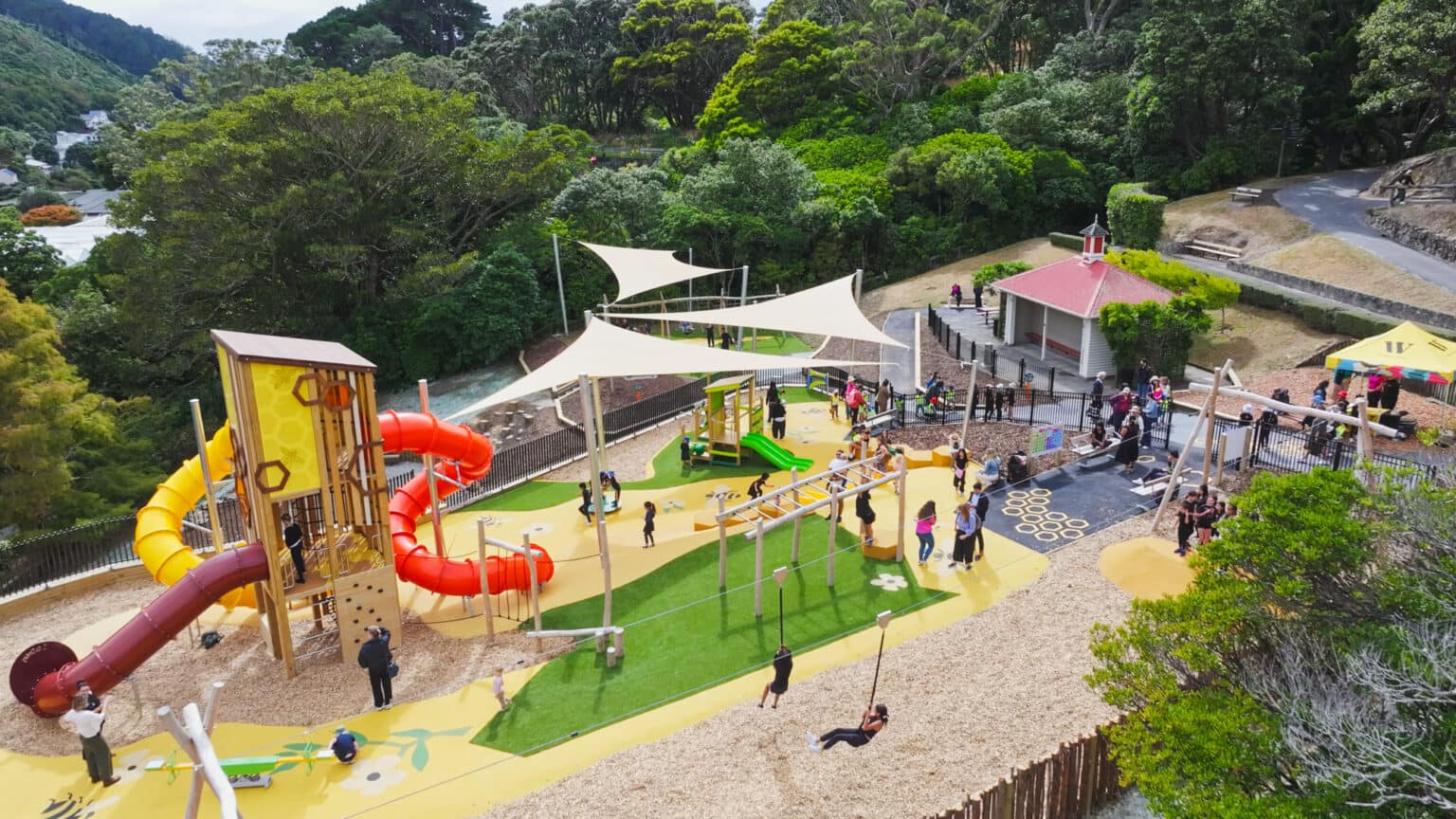

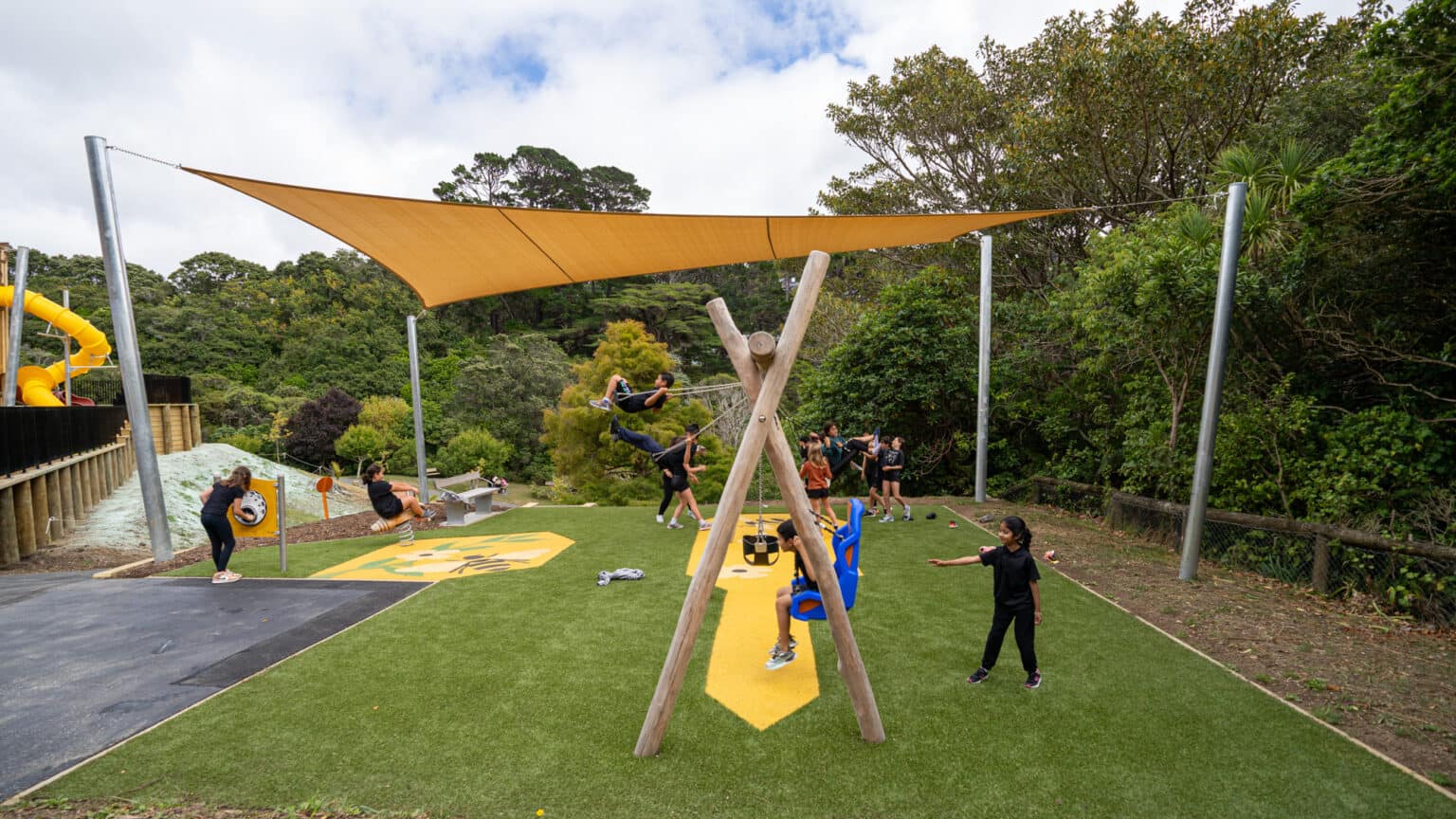

A buzzing new destination playground!
The Wellington City Council, in collaboration with the Botanic Gardens, embarked on a significant project to revamp the existing playground within the Wellington Botanic Gardens.
It was spearheaded by council stakeholders Matthew Beres and David Sole. The initiative aimed to modernise the playground while incorporating the unique aspects of the surrounding botanical landscape and the crucial role of bees in the ecosystem.

The primary goal was to refresh the playground to serve the community and visitors to the botanic gardens better.
Through community consultation, there was a strong desire for a space to educate children about the importance of pollination and the role of bees in sustaining flora.
The feedback informed the creation of a playground that could both entertain and educate, aligning with the broader themes of the botanic gardens.
"It's one of those multigenerational playgrounds. It's one of those places where you'll make memories that will go on for generations."
Raydeen Cuffe
Botanic Garden Visitor Experience Manager
Inclusivity and Education
A vital aspect of the project was ensuring the playground was accessible to children of all abilities, incorporating sensory panels to facilitate learning about the environment and pollination.
Outcome
The renovated Wellington Botanic Gardens Playground is a testament to innovative design, educational focus, and community engagement.
This project has not only revitalised a key community asset but also enhanced the botanic gardens’ educational offerings. It provides a space where children can learn about nature through play.
The playground’s design and features will be a valued community resource for years to come, embodying the garden’s themes of nature, education, and inclusivity.
If you’d like more information or to discuss a new project, get in touch today
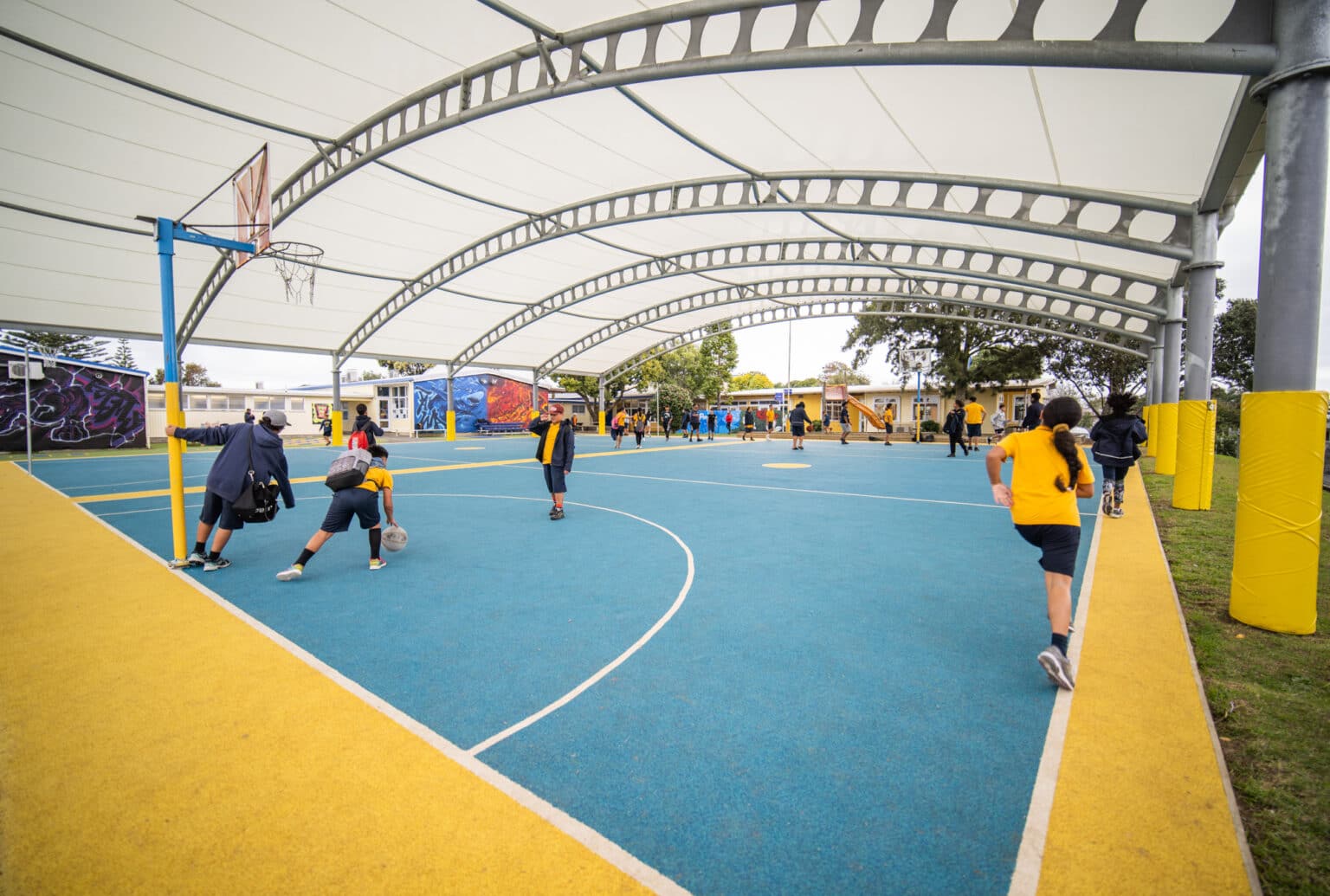

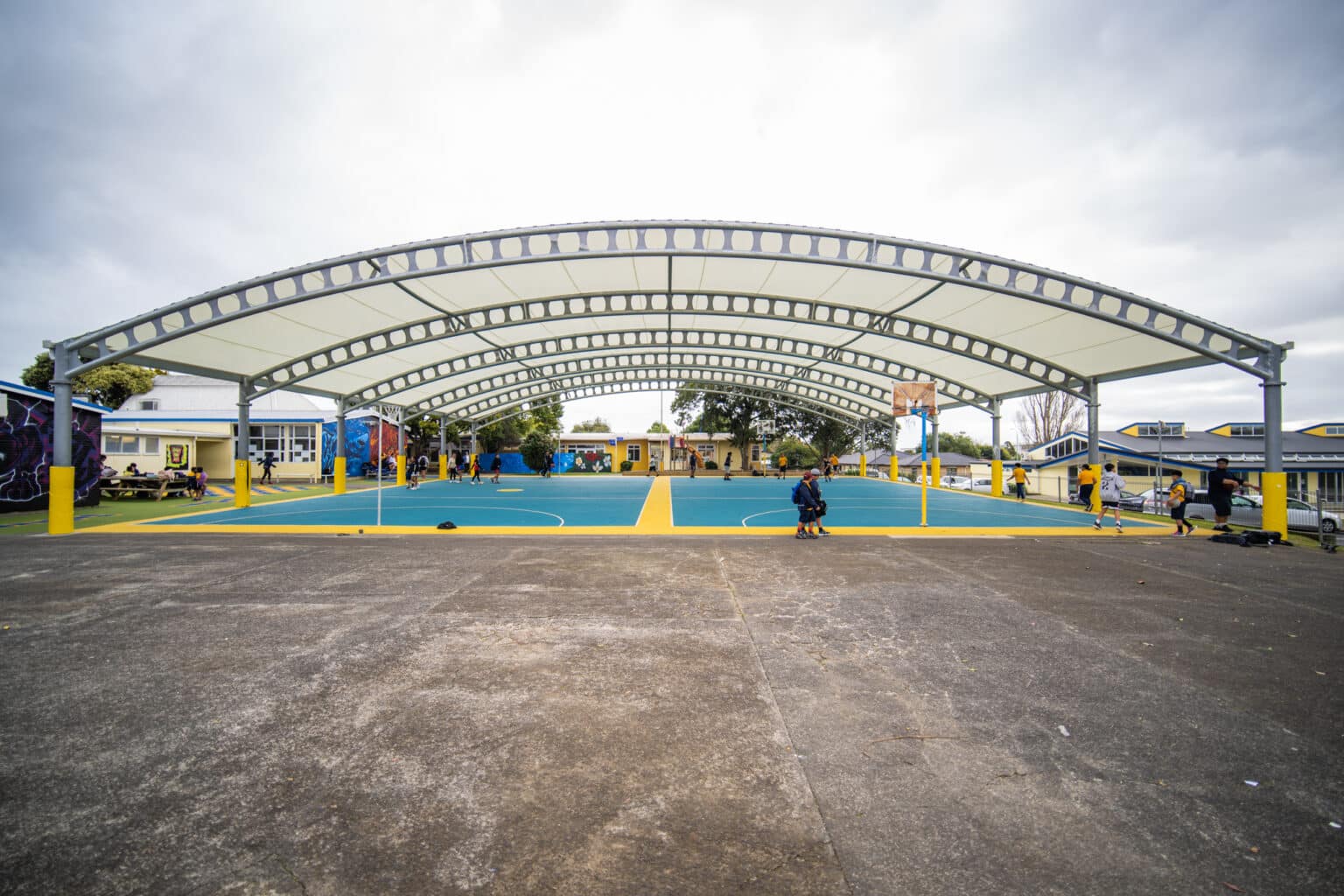



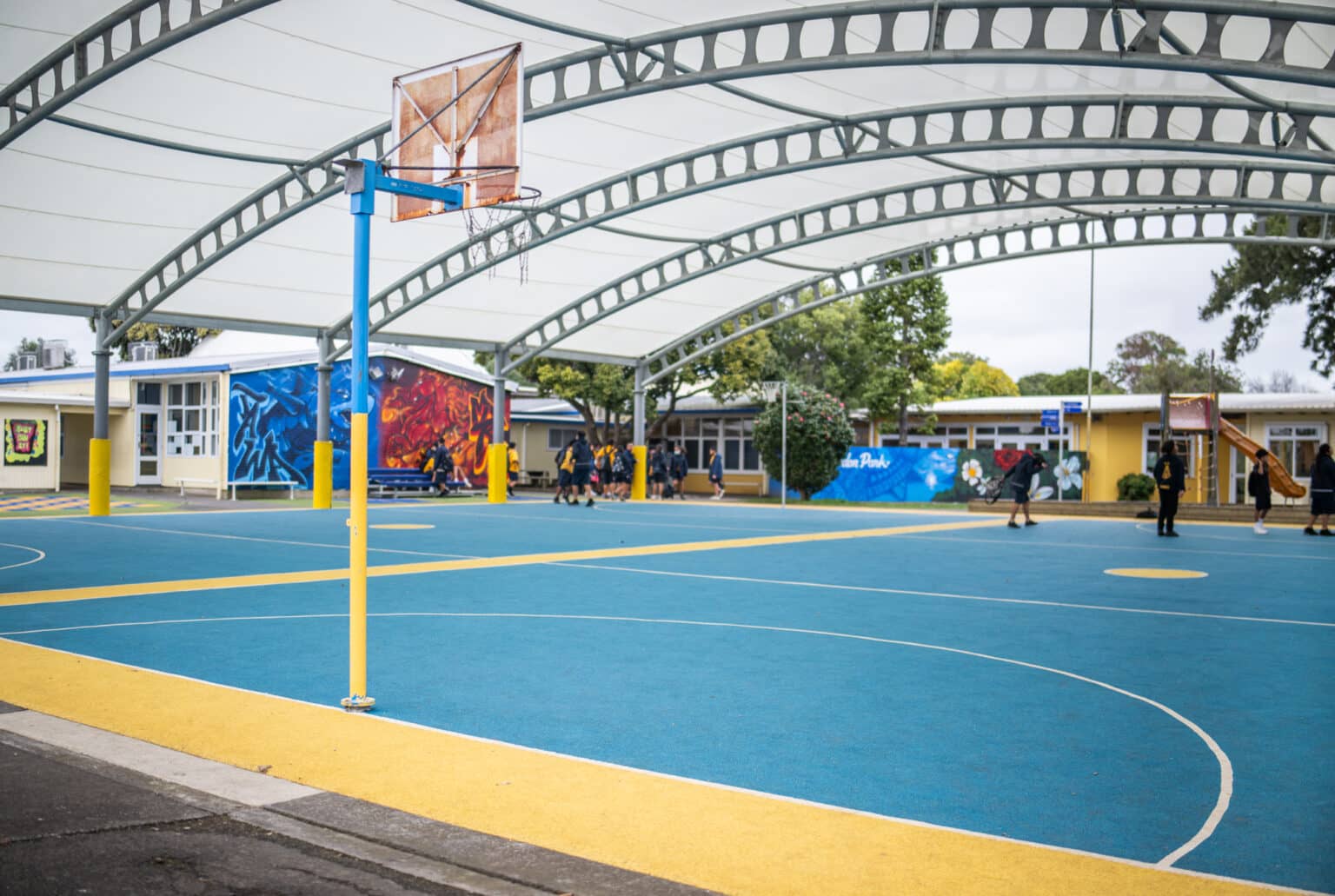

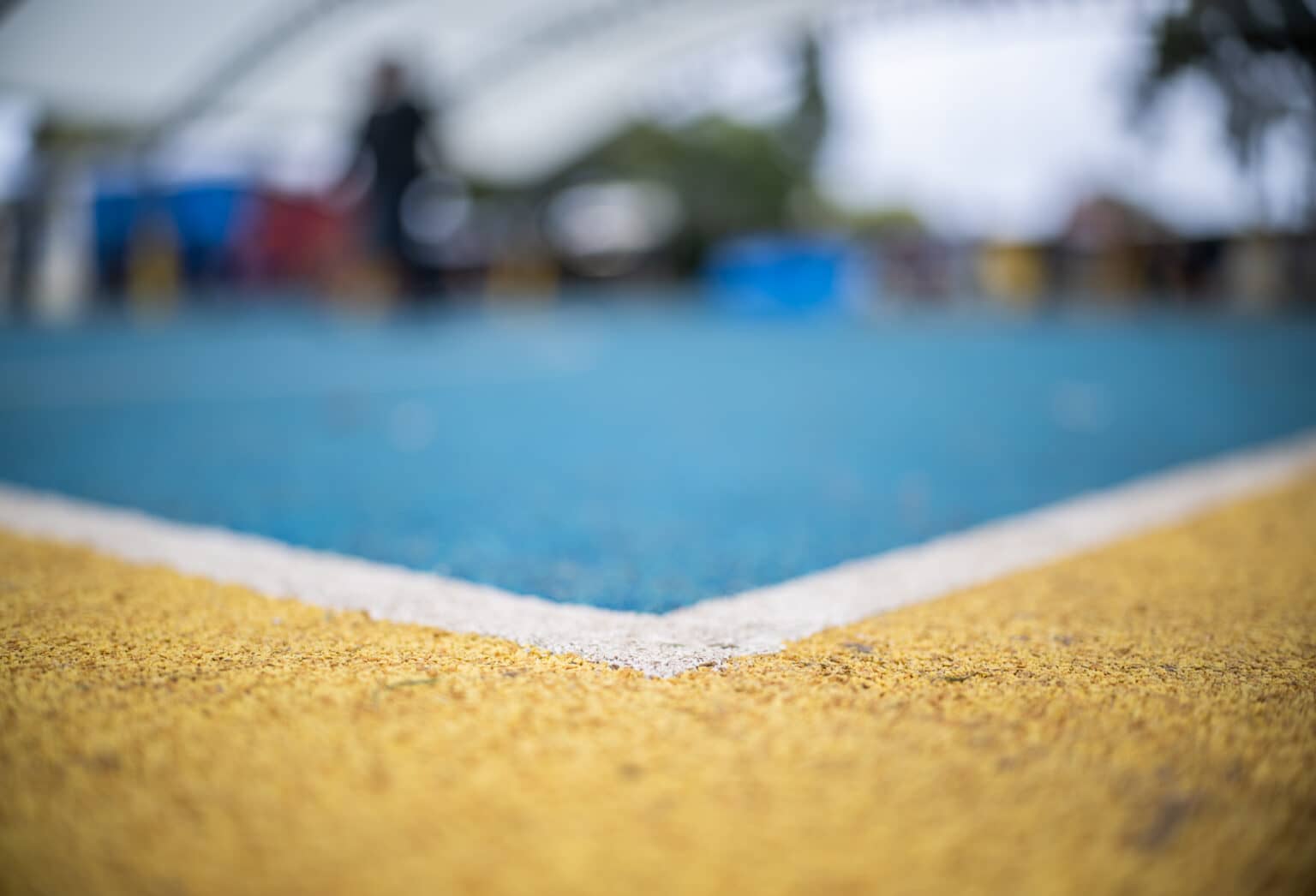

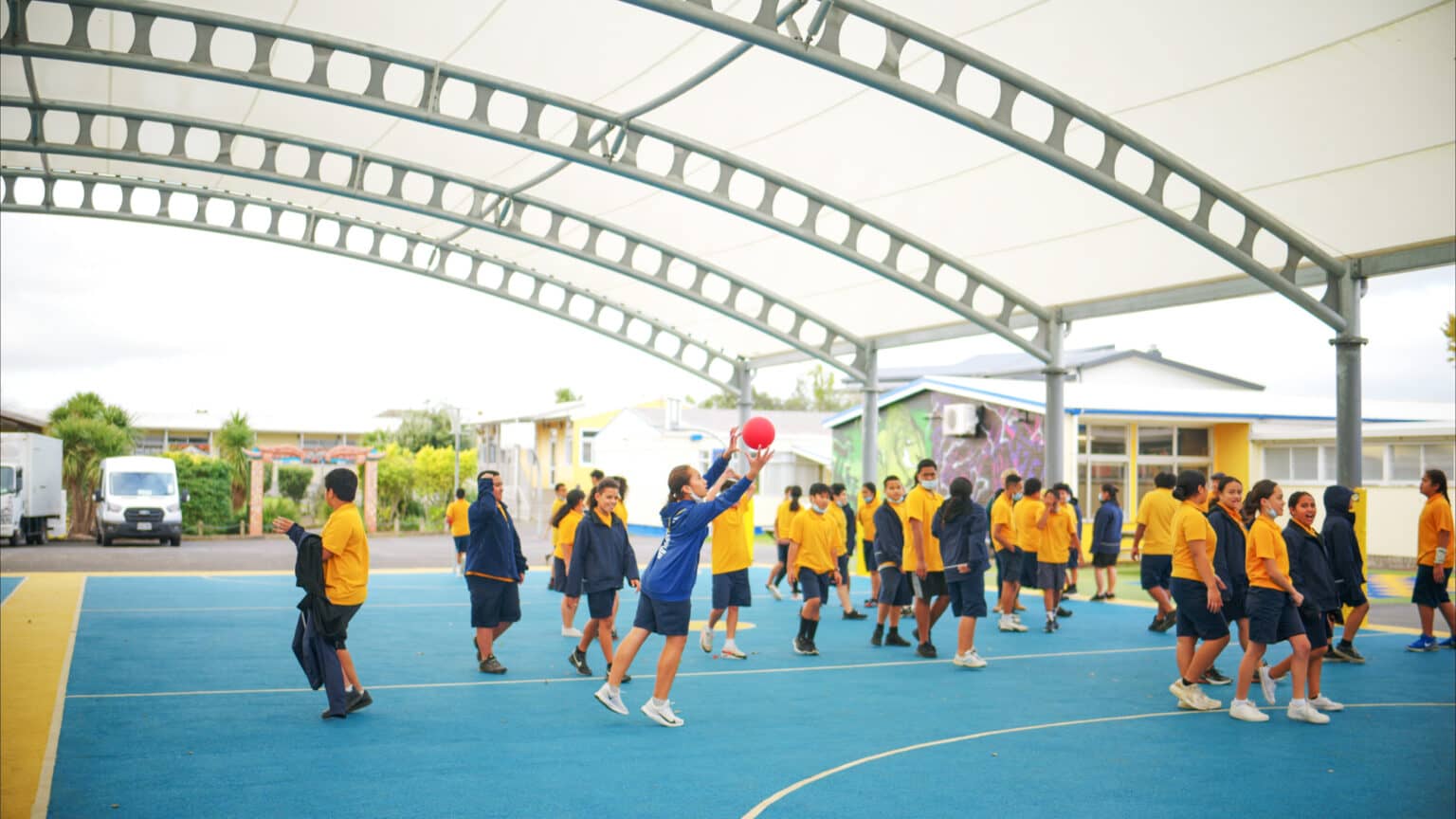

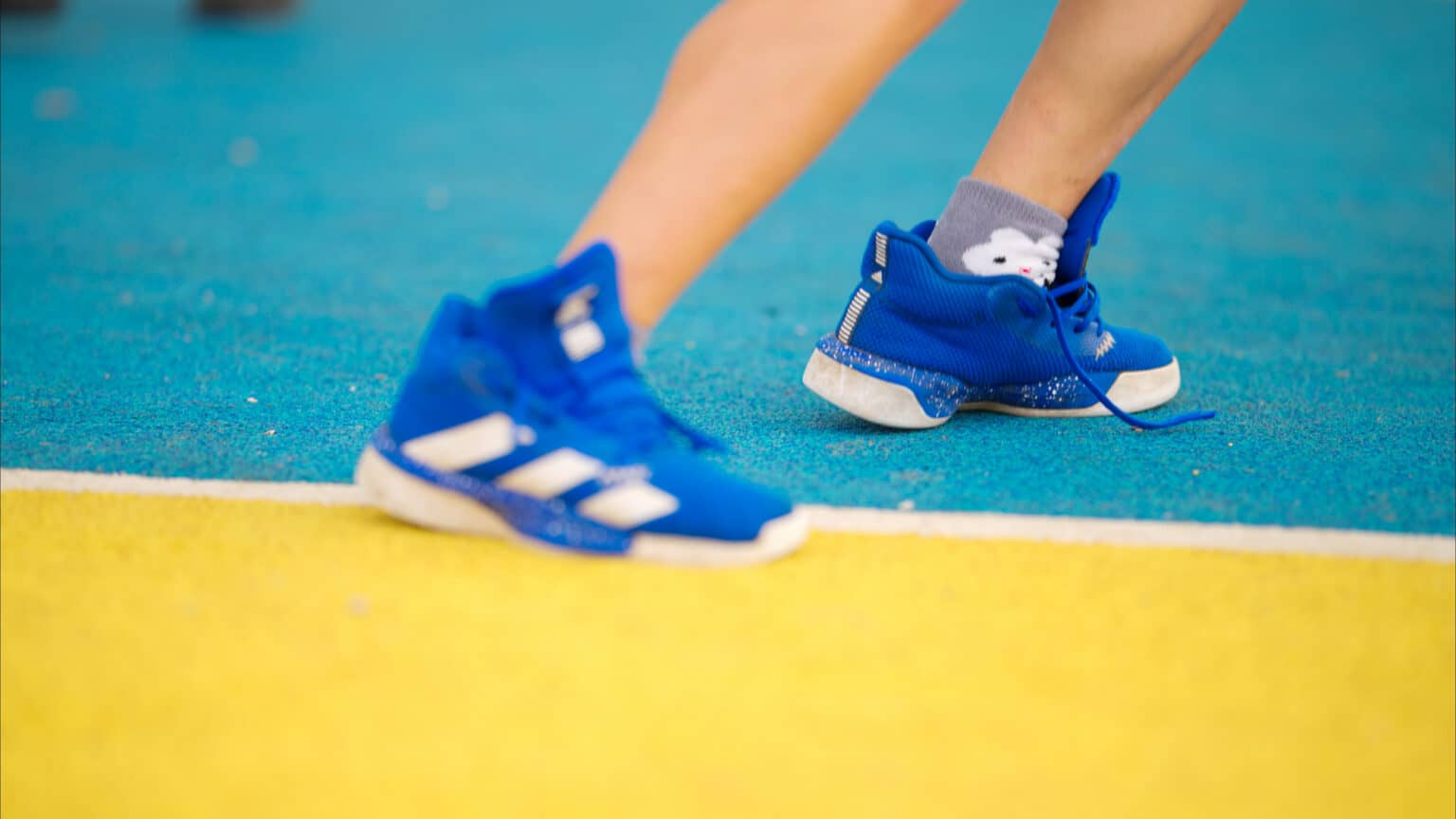

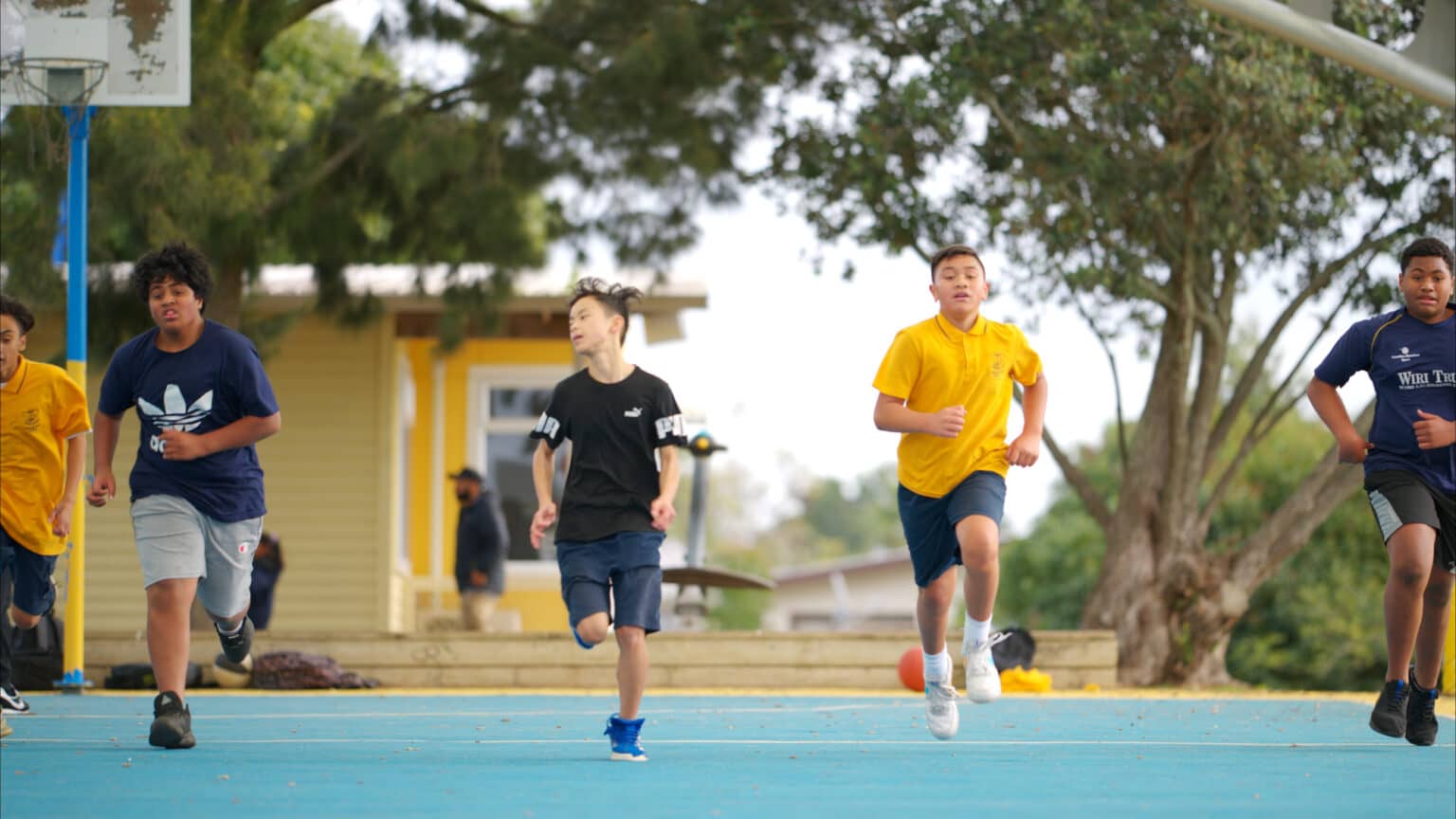

Creating an active space.
In 2021, Clendon Park School worked with Numat REC to re-surface the netball courts at their school, updating the concrete surfaces with wet pour rubber.
Pour’n’Play Sport was used to create the new surfacing. The installation team was able to create crisp court markings using the yellow and blue school colours, adding a unique personal touch to the space.
The new rubber surface is comfortable, safe, and fun to play on. Absorbing shocks and minimising injuries out on the courts.

If you’d like more information or to discuss a new project, get in touch today
In playground design, the emphasis often falls on the big structures, such as slides, swings, and platforms. Yet, the smaller, often overlooked elements can significantly enhance a space’s play value. Among these, balance balls stand out as both versatile and challenging additions.
Manufactured from durable TPV wet-pour rubber, these spherical wonders offer a unique blend of aesthetics and functionality, suitable for every corner of your playground.
Let’s jump into the world of balance balls, exploring their varieties, costs, benefits, and how they can transform play areas into dynamic environments.

Balance balls and innovative playground features are crafted in New Zealand using top-quality TPV rubber granules, ensuring longevity and safety.
Their design allows for a high degree of customization in colour, enabling seamless integration with your playground’s theme or colour palette.
Balance balls introduce a playful challenge to any space. By incorporating various sizes and styles, playground designers can create distinctive layouts, making these balls the centrepiece or a complementary feature that enhances the overall play value.

At Creo, balance balls are available within a price range of $640 to $4,800, exclusive of installation.
It’s important to note that these figures are indicative, with actual costs influenced by the design of your playground and the specific installation requirements to meet safety standards.
Incorporating balance balls into your playground design offers numerous advantages. Their construction from wet pour rubber ensures durability and allows for placement near fall zones, optimising space usage.
These elements support the development of key skills such as balance and strength, fostering social interaction and presenting a managed risk that encourages children to explore their capabilities in a safe environment.
Creo offers a variety of sizes for balance balls, ranging from 300mm to 700mm in diameter for both fixed and moving configurations, as well as half-ball options.
Customisation extends beyond size, with many colour choices and themes available, including celestial bodies and sports-themed designs, to make your playground unique.
Check our colour mixer and play with the colour options you can have
Balance balls are more than just playful additions; they are essential in creating engaging, dynamic, and inclusive play spaces.
Their ability to blend challenge with safety and extensive customisation options make them an invaluable asset in playground design.
Whether you want to add a new dimension to your play area or embark on a complete redesign, consider the versatile and vibrant world of balance balls.
Call us now to collaborate on your next Playground Design at 0800 000 334 or send an email to [email protected]
Lead times in playground projects can often stretch your timelines, pushing back those exciting grand openings. However, there’s good news: with strategic planning and smart decisions, you can significantly reduce these delays.
In this article, we’ll explore three effective strategies to keep your project on track and ensure your new playspace comes to life sooner than you might think.

The foundation of any successful playground project lies in meticulous planning. Start by setting a clear timeline, including key milestones from design approval to the installation phase.
Engaging with a design and build company early on can help identify potential bottlenecks and streamline the process. Remember, the earlier you start, the more room you have to maneuver around unexpected delays.
A well-defined budget does more than just keep your finances in check; it also accelerates decision-making.
When you’re clear about what you can spend, suppliers and contractors can offer solutions that match your financial constraints, reducing back-and-forth negotiations.
This clarity allows for a smoother, faster procurement process, ensuring materials and services
Choosing locally manufactured playground equipment can significantly cut down on lead times.
Not only does it reduce shipping times, but it also simplifies logistics, making it easier to manage delivery schedules and installation.
Supporting local manufacturers not only benefits your project timeline but also contributes to the local economy, creating a win-win situation.
By implementing these strategies, you’re not just reducing lead times; you’re also finalizing your project earlier, saving both time and money.
Moreover, opting for local manufacturing means you’re investing in your community, supporting local businesses, and fostering a sense of pride in the finished playspace.
These benefits extend far beyond the completion of the project, contributing to a stronger, more connected community.
Reducing lead times on your playground project is achievable with careful planning, clear budgeting, a preference for local manufacturing, and an understanding of the broader benefits.
These strategies ensure your playspace is completed efficiently and effectively, saving time and resources while supporting the local economy.
The next step? Start planning your project with these tips in mind, and consider partnering with a design and build company that understands the importance of keeping your project on schedule
. Together, you can create a vibrant, engaging playspace that your community will enjoy for years to come.
Call us now to collaborate on your next Playground Design on 0800 000 334 or send an email to [email protected]
Urban environments are rapidly transforming, and at the heart of this change is the integration of playspaces—areas designed not just for play but for community engagement and well-being. These spaces are crucial in urban settings, offering a breathing space from the concrete jungle and enhancing the quality of life for residents.
The design of these areas is paramount, focusing on inclusivity and accessibility to serve the diverse urban population effectively.

Core Design Principles
Principles of inclusivity, creativity, and sustainability guide the design of urban playspaces. These spaces aim to be accessible to all, fostering community among a diverse urban population.
The goal is to create engaging environments encouraging social interaction and physical activity.
Enhancing Urban Connectivity
Playspaces can significantly affect urban planning, connecting different city areas.
Their strategic placement can encourage exploration and movement, making the urban environment more cohesive and navigable.
Merging Play with Nature and Art
Incorporating natural elements and public art into playspaces can enrich the urban experience. These spaces offer a blend of aesthetics and functionality, providing immersive experiences that engage children and adults.
Embracing Technology
The future of playspaces includes the integration of technology, offering interactive and educational experiences.
This approach aims to create spaces that are not only fun but also enriching, preparing children for a digital future.
Sustainability at the Forefront
Sustainable design is becoming a priority, with a focus on eco-friendly materials and practices. This trend reflects a growing awareness of environmental issues and a commitment to preserving the planet for future generations.
Community Involvement in Design
The involvement of local communities in the design process ensures that playspaces meet the needs and reflect the values of those who use them. This collaborative approach enhances the relevance and impact of these spaces.
Playspaces are integral to the vitality of urban environments, offering spaces for play, learning, and community engagement. As urban areas continue to evolve, the need for innovative and inclusive playspaces is clear.
Urban planners, designers, and communities must work together to prioritize these spaces, ensuring they remain a vibrant part of urban life.
If you are ready to make your community better, call us on 0800 000 334 or send an email to [email protected].
| Cookie | Duration | Description |
|---|---|---|
| cookielawinfo-checkbox-analytics | 11 months | This cookie is set by GDPR Cookie Consent plugin. The cookie is used to store the user consent for the cookies in the category "Analytics". |
| cookielawinfo-checkbox-functional | 11 months | The cookie is set by GDPR cookie consent to record the user consent for the cookies in the category "Functional". |
| cookielawinfo-checkbox-necessary | 11 months | This cookie is set by GDPR Cookie Consent plugin. The cookies is used to store the user consent for the cookies in the category "Necessary". |
| cookielawinfo-checkbox-others | 11 months | This cookie is set by GDPR Cookie Consent plugin. The cookie is used to store the user consent for the cookies in the category "Other. |
| cookielawinfo-checkbox-performance | 11 months | This cookie is set by GDPR Cookie Consent plugin. The cookie is used to store the user consent for the cookies in the category "Performance". |
| viewed_cookie_policy | 11 months | The cookie is set by the GDPR Cookie Consent plugin and is used to store whether or not user has consented to the use of cookies. It does not store any personal data. |









